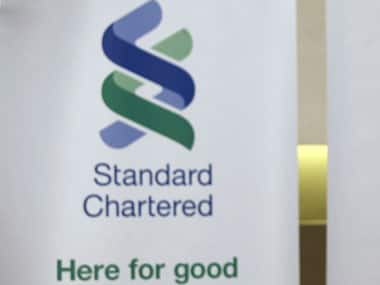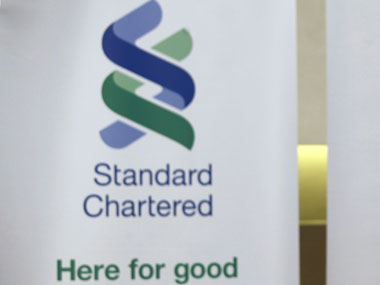The whole idea of having Indian depository receipts (IDRs) to counter the concept of American depository receipts (ADRs) seems a bit flawed. IDRs are essentially instruments issued by foreign companies in India whose underlying asset is a share listed abroad.
The case of Standard Chartered Bank’s IDR serves as a perfect illustration of this. On Friday, the Securities & Exchange Board of India (Sebi) announced that it would not allow holders of Stanchart IDRs to convert them into underlying shares since the market for these receipts continues to be liquid.
[caption id=“attachment_21807” align=“alignleft” width=“380” caption=“Yet to get the Sebi nod. Bobby Yip/Reuters”]
 [/caption]
[/caption]
In Sebi’s scheme of things , unless the trading volume falls below 5% of outstanding IDRs, there is no case for allowing people to convert these receipts into actual shares. Currently, every IDR is equal to one-tenth of a Standard Chartered share listed in London. Or, 10 IDRs equal one StanChart share.
The IDR duly tanked on Monday, since investors were apparently banking on exchanging cheap IDRs for costlier shares when the one-year lock-in for the IDRs ended on 10 June. On Tuesday, the IDRs were trading well below Rs 100 - when the equivalent London price of the share was 20% more.
Quite clearly, the only reason why investors piled into StanChart IDRs was because they were trading at such a huge discount to the London price. But not all investors. The investors who were keen on these shares were really foreign institutions (FIIs) and big mutual funds, who could afford to play the arbitrage game: buy cheap in Mumbai and sell dear in London. As much as 70% of the IDRs are held by FIIs.
It is this arbitrage that Sebi has stopped.
The first question to ask is this: Why issue IDRs and raise money in India when the investors are the same folks you could have got anyway in London and New York?
The issue of IDRs makes sense for foreign companies if you are going to expand your shareholding public, and obtain a wider catchment area for future share issues. Instead, what StanChart got was the same set of investors they could have got in London for a better price. The FIIs bought IDRs because they were obtainable at bargain-basement rates in India.
The second point is this. Companies raise capital at the place that gives them the best price. This is why excellent Indian companies list on the New York Stock Exchange or Nasdaq. If companies (like Standard Chartered) want to do the reverse, it must be solely because they want to broadbase the shareholding. In this case, StanChart should have barred FIIs from investing in the IDR issue. Why hand over easy money to the same bandicoots? Only Indian retail investors and mutual funds should have been allowed to invest. But that is not what happened.
The third point is this. The Indian stock market is really shallow. As investors, we prefer debt. Millions do dabble in stocks, but they are still a minuscule portion of the total investor base in India. Not that we don’t have money to invest. But 75% of our mutual fund corpus is not equity. And our pension funds are not even allowed to invest in equity.
In sum, Sebi is right to ban the conversion of IDRs into Standard Chartered shares just for the benefit of FIIs who want to make a quick buck, but it is right for the wrong reasons. It should not have allowed an IDR issue in the first place without asking itself why it is doing this.
That said, Sebi should not be micro-managing these things. If people want to go back and forth between IDRs and shares, they should be allowed to.
But the real issue is this: IDRs makes little sense in the Indian context when the best companies want to tap foreign capital-which is where the huge investible surpluses are-and the best foreign companies want to list here only for nominal reasons. For IDRs to succeed, the retail market has to be developed first.
Sebi’s go-ahead to StanChart’s IDR a year ago was like putting the cart before the horse - unless the issue was purely for local consumption. By throwing the party open to the FIIs, it was essentially promising them a free lunch. Hence the disappointment.
)